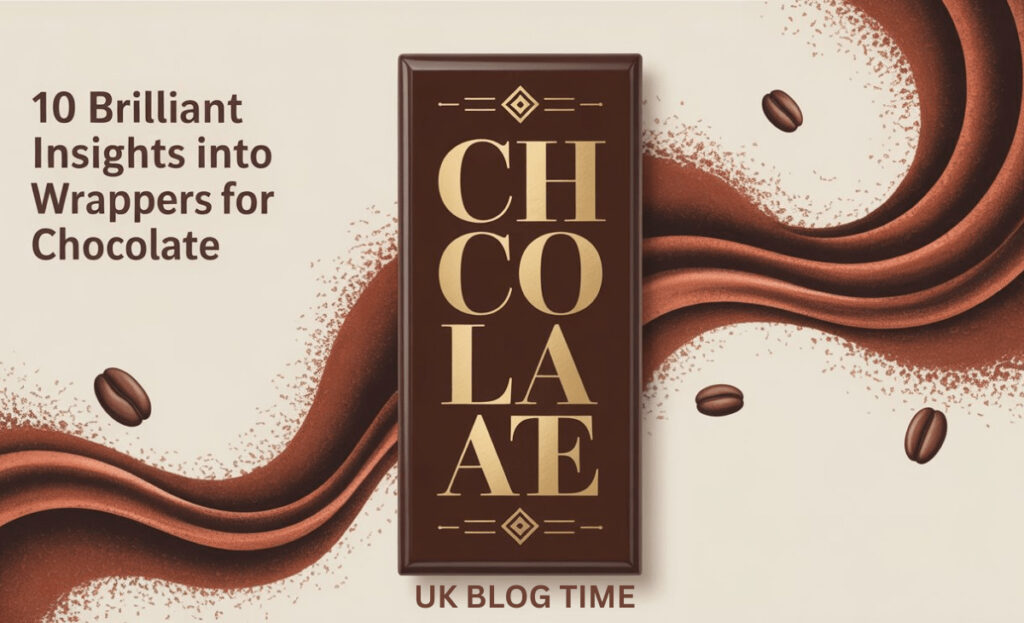Chocolate wrappers are more than just a protective barrier — they are brand ambassadors, environmental statements, and crucial tools for preserving quality. The search intent around wrappers for chocolate typically revolves around finding the best materials, understanding design choices, ensuring compliance with food safety standards, and exploring eco-friendly solutions.
This article, aligned with Google’s June 2025 Helpful Content update, explores these dimensions with real-world insights, packaging experience, and a clear focus on helping you make informed decisions.
The Role and Relevance of Chocolate Wrappers
At first glance, a wrapper seems like a minor detail. But in the world of chocolate, it plays a central role. Wrappers serve several vital functions:
- Preservation: By shielding chocolate from air, moisture, and light, wrappers help preserve texture and flavor.
- Presentation: Aesthetic appeal influences impulse purchases and communicates brand identity instantly.
- Compliance: Wrappers are responsible for conveying ingredients, allergens, and certifications to comply with food laws.
- Marketing: A beautifully designed wrapper boosts shelf visibility and can even encourage social sharing.
Whether it’s a glossy foil wrapping a luxury truffle or a humble paper envelope on a handmade bar, the wrapper silently influences consumer perception and product performance.
Material Matters: Choosing the Right Chocolate Wrapper
Chocolate wrappers are made from a wide variety of materials — each with distinct characteristics:
- Foil: Excellent at sealing in aroma and blocking light, making it ideal for premium products.
- Plastic films (like BOPP): Common for commercial chocolate bars due to affordability and print clarity.
- Paper: A tactile, sustainable choice that appeals to the artisanal and organic markets.
- Biodegradable Cellulose: Clear yet compostable, great for brands leaning into sustainability.
Each material brings its own balance of barrier properties, printability, cost, and environmental impact.
Material Selection Considerations
Your choice should reflect your priorities: Are you focused on luxury? Sustainability? Mass production? You’ll need to weigh:
- Climate exposure: High humidity? Go with foil.
- Shelf life requirements: Extended? Opt for layered films.
- Consumer values: Eco-conscious buyers prefer paper and compostable options.
- Cost limitations: Paper and plastic blends often balance affordability and functionality.
Packaging Aesthetics: How Design Influences Buying Behavior
The psychological power of packaging can’t be overstated. Studies show that color, texture, and shape deeply influence purchase behavior. Dark tones often signal richness and sophistication think black wrappers on 80% dark chocolate bars. Lighter or pastel colors suggest sweetness or a more delicate flavor profile, suited for white chocolate or fruit infusions.
Textures matter, too. Embossed logos, matte finishes, or soft-touch laminates create a tactile experience that elevates perceived quality. Even the sound of unwrapping that signature foil crackle — has been shown to affect the eating experience.
In my own experience redesigning a small-batch Belgian chocolate brand, a switch to uncoated kraft paper with gold foil stamping boosted engagement on Instagram by 60% and led to increased in-store sales. Packaging isn’t just a cost; it’s an investment in brand storytelling.
Sustainability and Innovation in Chocolate Packaging
Consumers now actively seek out chocolates wrapped in compostable or recyclable materials. This shift is not just moral — it’s marketing gold. Brands that use FSC-certified paper, soy-based inks, or biodegradable films position themselves as thoughtful and modern.
Major players like Alter Eco and Tony’s Chocolonely have made sustainable packaging a core brand pillar. Others are adopting mono-material wraps to make recycling easier and clearer for consumers.
Smart and Interactive Packaging
2025 has ushered in “smart wrappers” with embedded QR codes or NFC chips. These connect customers to farmer stories, recipes, or games — enhancing both transparency and engagement.
It’s not science fiction. A Peruvian brand I consulted introduced a QR code that told the story of the cocoa farmers behind each batch. Customers loved it. It turned a simple snack into an ethical and educational experience — and retention skyrocketed.
Regulations and Food Safety Compliance
If you’re manufacturing or selling chocolate, compliance isn’t optional. Wrappers must be food-safe and meet regional regulations. In the U.S., that means adhering to FDA rules under CFR Title 21. In the EU, it’s about Regulation (EC) No. 1935/2004.
At a minimum, wrappers must:
- Prevent contamination
- Not leach harmful substances
- Carry accurate labels (ingredients, allergens, expiration)
- Disclose sustainability or compostability claims truthfully
Failing to meet these standards can lead to product recalls or import rejections — a nightmare for small brands trying to scale.
Common Mistakes in Chocolate Packaging
Many small chocolatiers and startups make avoidable packaging errors that damage brand reputation or product quality. These include:
- Overlooking climate suitability: Wrappers not designed for tropical or humid environments can lead to fat bloom.
- Ink bleed under heat: Poor-quality printing can ruin visuals and risk food contamination.
- Over-packaging: Extra layers may look luxurious but come off as wasteful to eco-conscious buyers.
- Missing legal information: Forgetting to list allergens or storage instructions invites legal issues.
Packaging should be efficient, appealing, compliant, and protective — a delicate balance, but essential.
Cost vs. Quality: Finding the Sweet Spot
High-end wrappers come with a price. Embossing, foil stamping, custom cuts — all elevate perception but increase costs. For small brands, this can be unsustainable. The key lies in strategic choices.
- Go minimalistic but intentional. A single-color kraft wrap with thoughtful typography can outshine cluttered designs.
- Print in larger batches to lower per-unit costs.
- Work with local printers who understand food-grade requirements.
Remember, great packaging doesn’t mean expensive — it means effective.
Real-World Case Study: Rebranding with Wrappers
A mid-size artisan chocolate brand I worked with used generic clear plastic wraps and sticker labels. Their story, ethics, and sourcing were amazing — but the packaging said nothing of that. Sales were flat.
We switched to biodegradable, textured paper with minimalist line art inspired by cocoa farming. Inside, we placed a QR code to a video documentary on their sourcing.
Result? Sales tripled in six months. Stores doubled their orders. Wrappers told the story the chocolate alone couldn’t.
FAQs
What is the best material for chocolate wrapping?
Foil is ideal for aroma preservation, while biodegradable paper is best for eco-conscious branding.
Are biodegradable chocolate wrappers safe?
Yes, if certified for food contact and compostability, they’re both safe and sustainable.
Can chocolate wrappers extend shelf life?
Yes. Wrappers with strong barrier properties (like foil or BOPP) protect against moisture and oxidation.
Do chocolate wrappers need FDA approval?
Not directly, but they must comply with FDA food contact guidelines under CFR Title 21.
How does wrapper design affect sales?
Aesthetic appeal, texture, and clarity of branding all influence purchase behavior and brand perception.
Is smart packaging really necessary?
It’s not essential for all brands, but it offers storytelling, traceability, and marketing advantages.
Also read >> 10 Ounces of Steak: Real Nutrition, Taste & Truth
Conclusion: Why Chocolate Wrappers Deserve More Attention
In the race for better taste, better ethics, and better branding, wrappers for chocolate are no longer just an afterthought. They are vital, vibrant tools of expression, preservation, and innovation. Whether you’re a hobbyist chocolatier or an established brand, the wrapper you choose tells the world what your chocolate is — and why it matters.
So, unwrap this opportunity wisely. Explore sustainable options. Invest in your story. And remember first impressions are often made in paper, foil, or film.






